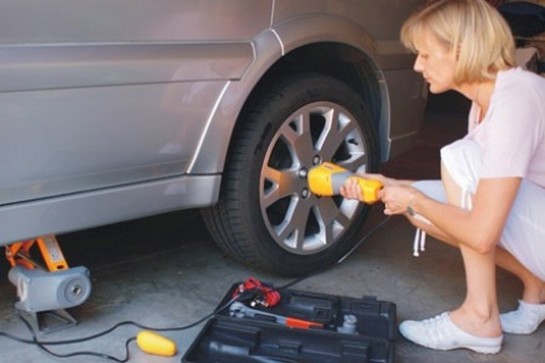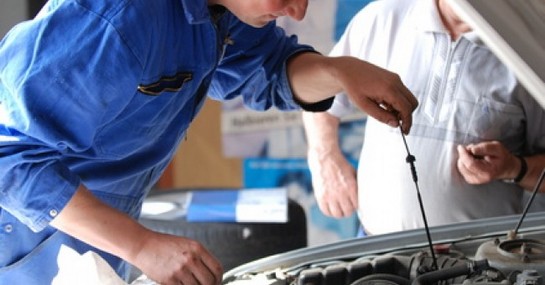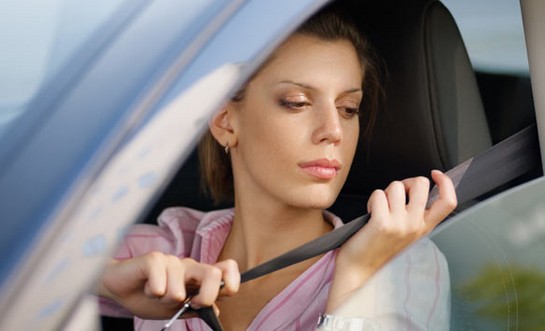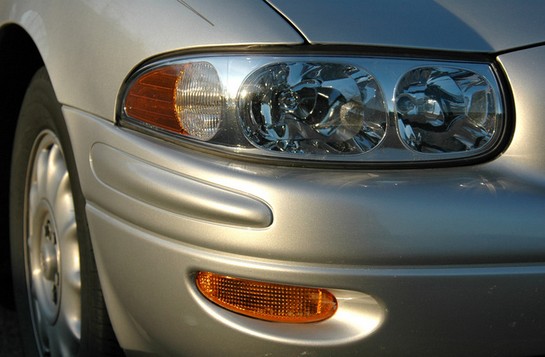Most people never actually care about “small things” such as the possibility of their car breaking down. It’s not uncommon to find people on the side of the road waiting for a tow, just because they didn’t care about carrying the right tools to perform some small fixes that even your old grand-mother could do, so we’ve decided to put down a small list of things and tips on how you can prepare yourself for a car breakdown.
At least have:
- a high visibility vest
- a torch
- a jack and wheel brace (except on cars with no spare wheel)
- a screwdriver.
Preferably have:
- a small set of spanners
- pliers
- insulating tape and fuses
- a warning triangle
- a first aid kit
- a fire extinguisher
- spare bulbs
- waterproofs
- gloves.
Wheel-Changing Kit
If you car has a spare wheel, make sure it has a working jack and wheel brace and that you know where it all lives. Some are awkwardly stowed but do not be tempted to just leave them lying in the back, especially on cars without a separate boot. Tools are substantial lumps of metal that can do a lot of damage just crashing about as you hit bumps and take corners, but in an accident they become lethal missiles smashing into anyone and anything in their path.

If you are not very strong, try undoing the wheel nuts with the car’s brace and if you can’t exert enough force, buy a wheel brace with an extending handle or find something you can use as an extension to the car brace’s handle.
Tools
It’s also wise to add a few other tools to the basics supplied with the car because it is daft to be stuck for the sake of a loose screw. You only need a basic kit small enough to be kept in a large pencil case. Buy either a double-ended screwdriver, which has a single blade that has a flat head at one end and crosshead at the other, or a multi-bladed set. Add a small set of spanners and an adjustable one that can tackle nut sizes not catered for in the set or to be used when you need to hold a bolt steady while doing up the nut. A pair of pliers, insulating tape and a small knife are also useful. Another solution is a multi-tool device that has many of these tools folding into a single handle.
Most cars now have provision in the fuse box to keep one of each type of fuse used, but if yours hasn’t, keep some spares in a small plastic box (a 35 mm film canister is ideal).
Personal Safety
A few cars now come with high visibility reflective vests in their toolkits because in many countries these are a legal requirement if you get out of a car at the scene of an accident. They are also a very sensible thing to carry for emergency situations and are very cheap life-savers if you buy them from places like builders’ merchants. Posh cars also often include a pair of heavy cotton gloves in the toolkit, which fastidious or sensitive-skinned drivers might want to copy. Alternatively, keep moist wipes in the car.
Triangles
Some, mostly German, cars come with a warning triangle, which is compulsory in some countries to warn other drivers of an obstruction. They are a wise thing to carry and should be set up about 50 metres behind the car and further back if you are round a bend. The trouble with triangles is that you can always hold it in front of you as you walk away from the car, drawing drivers’ attention to the fact you are there, but you have to walk back hoping they take notice of the triangle by the road. That is one reason why The Highway Code no longer recommends their use on motorways, though anything placed even close behind your car to draw attention to the fact it has stopped is a good idea.
Light
All this is wasted if you can’t see what you’re doing on a dark country road, so keep a torch in the car but put it in the glove box, or somewhere else in the cabin, so you can find it before getting out of the car to help you seek out tools. Use alkaline or lithium ion batteries because these don’t run down when they’re not used, unlike rechargeables.
Cold and Wet
II you don’t want to carry a coat in the car, at least keep a compact emergency waterproof with the tools. Outdoor clothing shops stock basic waterproofs that fold up into a small pack. In cold weather take appropriate clothing even on short trips because a car quickly gets cold once the engine stops. If you are driving in extreme weather, or through a remote area, it is sensible to carry snacks because your body can’t keep warm without fuel. If you regularly drive in remote, cold areas consider keeping at least one foil ‘space blanket’ in the car, which can be bought cheaply in outdoor pursuit shops. In hot weather, take a bottle of water. Women wearing shoes unsuitable for walking should keep a more sensible pair in the car in case they have to walk to get help: mobile phones don’t work everywhere.











